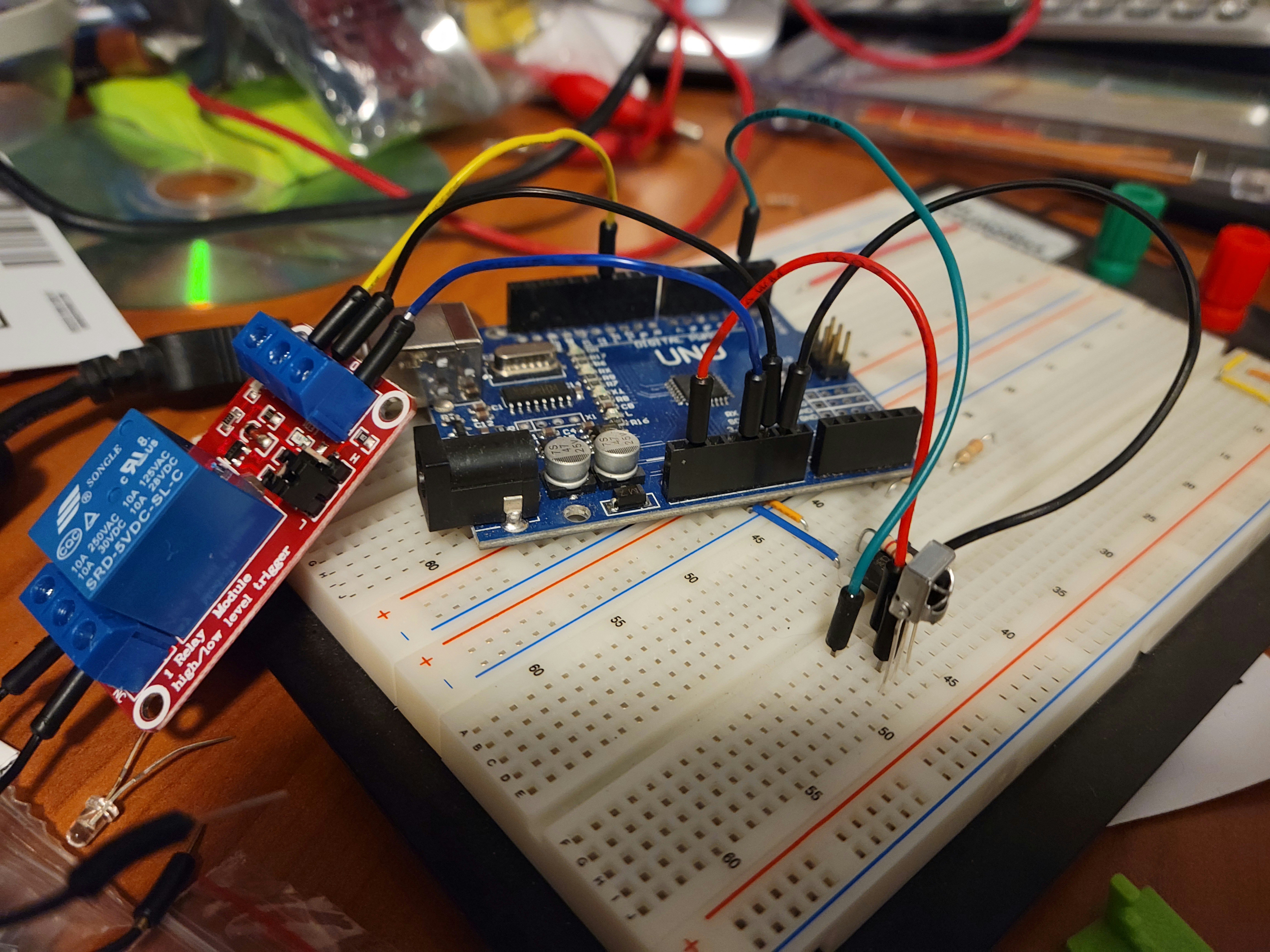-
IR triggered servo
10/13/2021 at 21:08 • 0 commentsSo far, this creation is just a variation of the code used for the relay. Instead of writing a pin high, I used the servo library to write the servo position to 180 for a few seconds, then back to zero.
The servo will open a hidden drawer in one of the decorations. Next steps for this are making a test version of the drawer.
-
IR Triggered Blacklight (Basilisk)
10/13/2021 at 21:02 • 0 commentsThe first responsive creation I started on was the IR triggered blacklight. This has two basic parts: a gutted blacklight flashlight, and an arduino that triggers a relay when the correct IR signal is detected.
The arduino uses a 3 pin IR sensor which is easily read with the arduino IRRemote library. I used the simplereceiver sample sketch as a starting point, changed the received command to match my Blaster, and write pin 11 low for a few seconds when the command is received. My relay can trigger on either high or low. I found that I couldn't pull enough current to trigger it high, so I use a low trigger.
The IR receiving is working flawlessly and triggering the relay as expected. The flashlight is wired to trigger from the relay. The flashlight runs on 3 AAA batteries, so I'm running it off the 5V output from my arduino. It pulls about 120mA max, which is too much to power it off an io pin. However, with the relay and 5V line it should be no problem. Yes, I could have used a transistor instead. Relays are more fun though. I'm a mechanical engineer, not electrical. The flashlight is lighting from the relay as planned. There's no more work on this part until I get to the creation of the decorations.
![]()
-
IR Blaster (Wand)
10/13/2021 at 20:49 • 0 commentsthe IR Blaster is the trigger that causes each of the other creations to come to life. The design will be fairly simple. An arduino nano, powered by batteries, will be connected to a button and an IR LED. When the button is pressed, the IR LED sends a coded signal. The coded signal ensures that the other creations won't trigger accidentally and matches the signal sent by my TV remote when I press the power button. This will make testing the other creations easier.
Coding was very simple and made heavy use of the simplesender sample sketch from the arduino IRRemote library. I just changed the address and command values to match my remote, and modified the loop to send when the button pulls pin 7 low, then delay for 100ms to avoid double sending too quickly.
The test version is complete and working flawlessly. Future work will involve creating the final version. This uses an arduino nano because it is the narrowest arduino derivative I could find, and I already happen to have several. The final version will be wired without headers to allow the smallest form factor. Everything will be packaged inside a wooden rod that will be hollowed out and tapered. The IR LED will sit at the top of the wand. Fabricating the wand will be a later task.
![]()
IR Everything
Multiple IR triggered creations with an IR blaster to make the magic happen
 Sean
Sean
